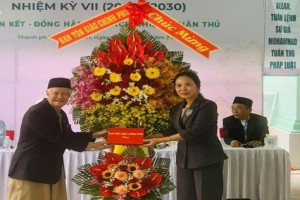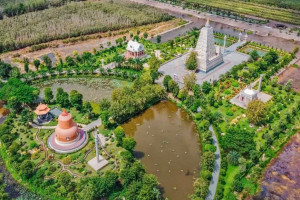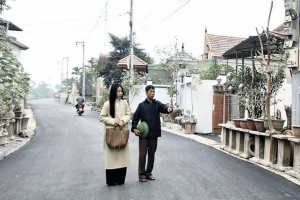
A definite shift in India’s Look East Policy is underway with added emphasis on Buddhist diplomacy. Prime Minister Narendra Modi plans to market the Buddha card to the countries in the region as India is the place of origin of Dhamma and Sangha. He indicated such a change in emphasis by his first official visit abroad to a neighbouring Buddhist country Asia, Bhutan, and then to Nepal, where Buddha was born. His first official visit outside South Asia was to another Buddhist country, Japan.
Chinese President Xi Jinping on his visit to India in September landed in Ahmedabad, Gujarat, where Prime Minister Modi received him and narrated the importance of the state in the Buddhist era and the visit of the ancient Chinese traveller Xuanzang (Hsüan-tsang) in 7th century AD. The Prime Minister of Vietnam, Nguyen Tan Dung, on a visit to India on October 27-28, made offerings at the Bodhgaya temple on his arrival.
The emphasis in the policy is likely to become more evident when the Prime Minister visits Nay Pyi Taw in Myanmar for the India-ASEAN Summit and East Asia Summit slated in the second week of December. Further edge to the new Look East Policy will be given when he visits Brisbane for the G20 Summit and have bilateral meetings with the Australian Prime Minister Tony Abbott in the middle of next month. Thereafter, Mr Modi gets the chance of expressing his Neighbours First Policy at the SAARC Summit in Kathmandu (November 26-27).
People-to-people contact is one of the cornerstones of Mr Modi’s foreign policy. His plans for making this as central to South Asia and then integrating with the South-East Asia makes him deploy the soft power of Buddha diplomacy. As forging integration in South Asia may become difficult due to the belligerent attitude of Pakistan, the Prime Minister may have the option of taking along with him the BIMSTEC group of countries - Bangladesh, India, Myanmar, Sri Lanka, Thailand, Bhutan and Nepal – and seek integration with the 10-member ASEAN bloc.
With a vast population of Buddhists in east and south-east Asia plans are afoot to make India a pilgrimage for world Buddhists. The work on phase-I Buddhist Tourist Circuit is gathering pace. This includes Lumbini in Nepal where the Buddha was born, Bodhgaya where he attained enlightenment under the Bodhi tree, Sarnath in Uttar Pradesh where he delivered his first sermon, Rajgir in Bihar where he lived and taught, Nalanda which became the centre of Buddhist learning and teaching, Kushinagar in UP where he departed from the world, Kapilavastu on the India-Nepal border where Buddha spent his early years before embarking on the long journey to enlightenment, Vaishali in Bihar where he delivered his last sermon, Sravasti in UP where he spent 24 rainy seasons at Jetavan monastery and Kausambi where he preached.
Buddha in Indian diplomacy is a soft power that can connect to the people in the east and south-east Asian region. China would have particular interest in the travel route of the ancient Chinese scholars like Xuanzang (Hsüan-tsang), Faxian (Fa Hien) and others.
After hosting the Olympics in Beijing, China has become assertive in projecting its ancient cultural identity, and will look towards India for its ancient linkages, particularly in matters of the spread of Buddhism and the visit of ancient scholars. Though its claim over Arunachal Pradesh remains a contentious issue between the two countries, many analysts believe that ultimately it has to look towards India in quest for preserving its ancient tradition and culture.
Buddha diplomacy, therefore, can be an effective tool and soft power for India’s engagement with South Asia, South-East Asia, East Asia, China and even Russia, which has a history of interest in Indian mysticism. People-to-people contact and cultural exchanges can go a long way to resolve contentious political issues in the near future.
An India-Buddhist axis is a well thought of plan in the country’s diplomacy for the entire India-Pacific region. Can the Modi government attract considerable foreign direct investment (FDI) for developing the Buddhist Tourist Circuit and make India a beacon for global Buddhists?
(http://www.globalresearch.ca)




